| Terms | Deals With |
| Digital Thread |
|
| Voice Activity Detection (VAD) |
|
| Diagnostic Analytics |
|
| Drive-by Attack |
|
| Diplomatic Passports |
|
| Must Read | |
| NCERT Notes For UPSC | UPSC Daily Current Affairs |
| UPSC Blogs | UPSC Daily Editorials |
| Daily Current Affairs Quiz | Daily Main Answer Writing |
| UPSC Mains Previous Year Papers | UPSC Test Series 2024 |
China launched its second mission to the far side of the Moon. If successful, it will be the world’s first mission to bring back samples from the far side of the Moon.
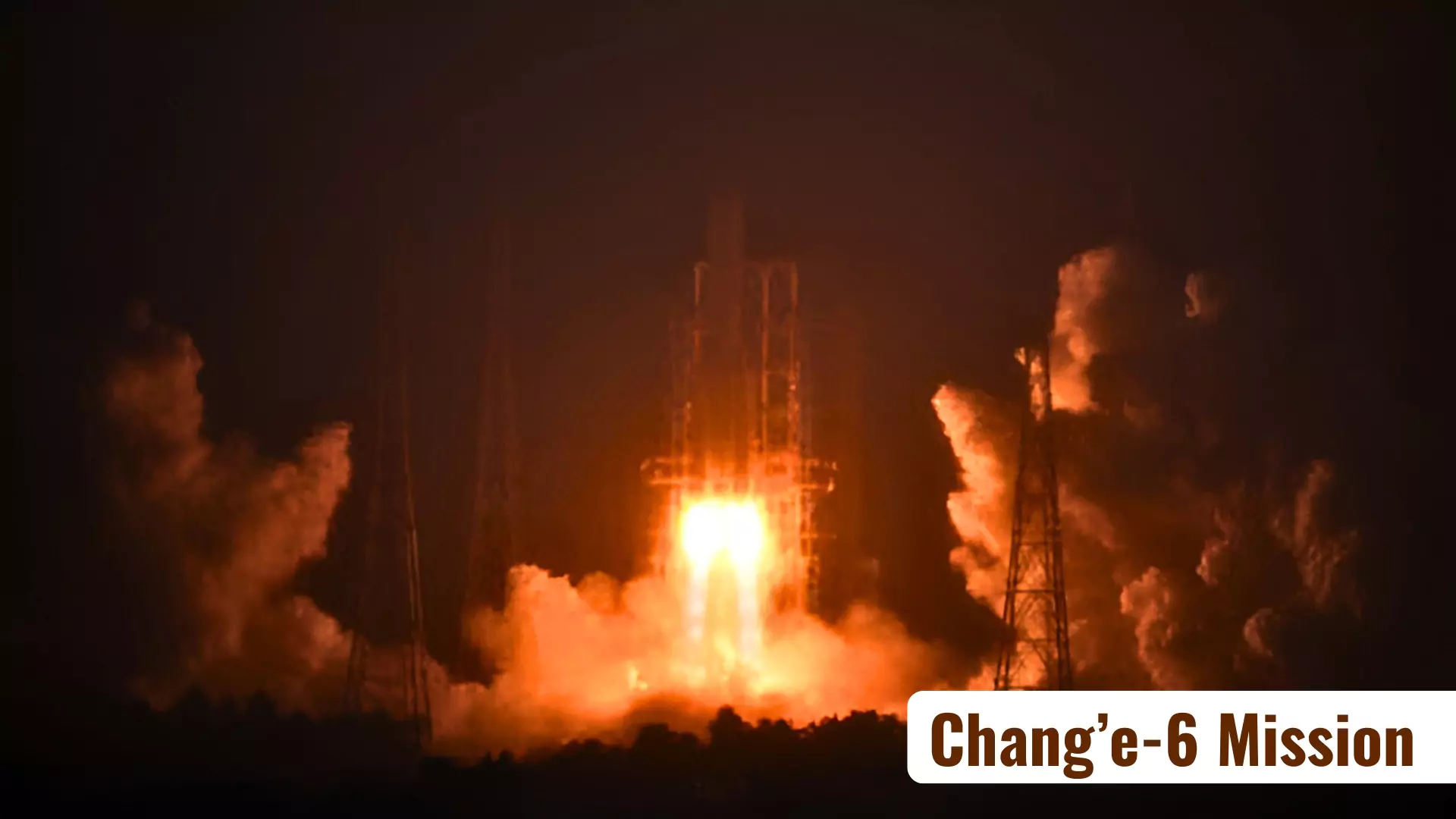
Chang’e-6 mission is a 53-day-long mission. After reaching the Moon’s orbit, the mission’s orbiter will circle the natural satellite while its lander will descend into the 2,500-kilometer-wide South Pole-Aitken basin on the lunar surface.
The Moon’s far side is often referred to as the dark side because it cannot be seen from the Earth. Due to tidal locking with Earth, only one side of the Moon, known as the near side, is observable from our planet.
Chandrayaan-4 is the first step towards achieving the goal of India landing an astronaut on the moon in 2040.
| Must Read | |
| NCERT Notes For UPSC | UPSC Daily Current Affairs |
| UPSC Blogs | UPSC Daily Editorials |
| Daily Current Affairs Quiz | Daily Main Answer Writing |
| UPSC Mains Previous Year Papers | UPSC Test Series 2024 |
A male orangutan, on the Indonesian island of Sumatra, has been recorded by German and Indonesian scientists using a medicinal plant Akar Kuning (Fibraurea tinctoria), or yellow root to treat a wound on his face.
A male Sumatran orangutan named Rakus sustained a face injury.
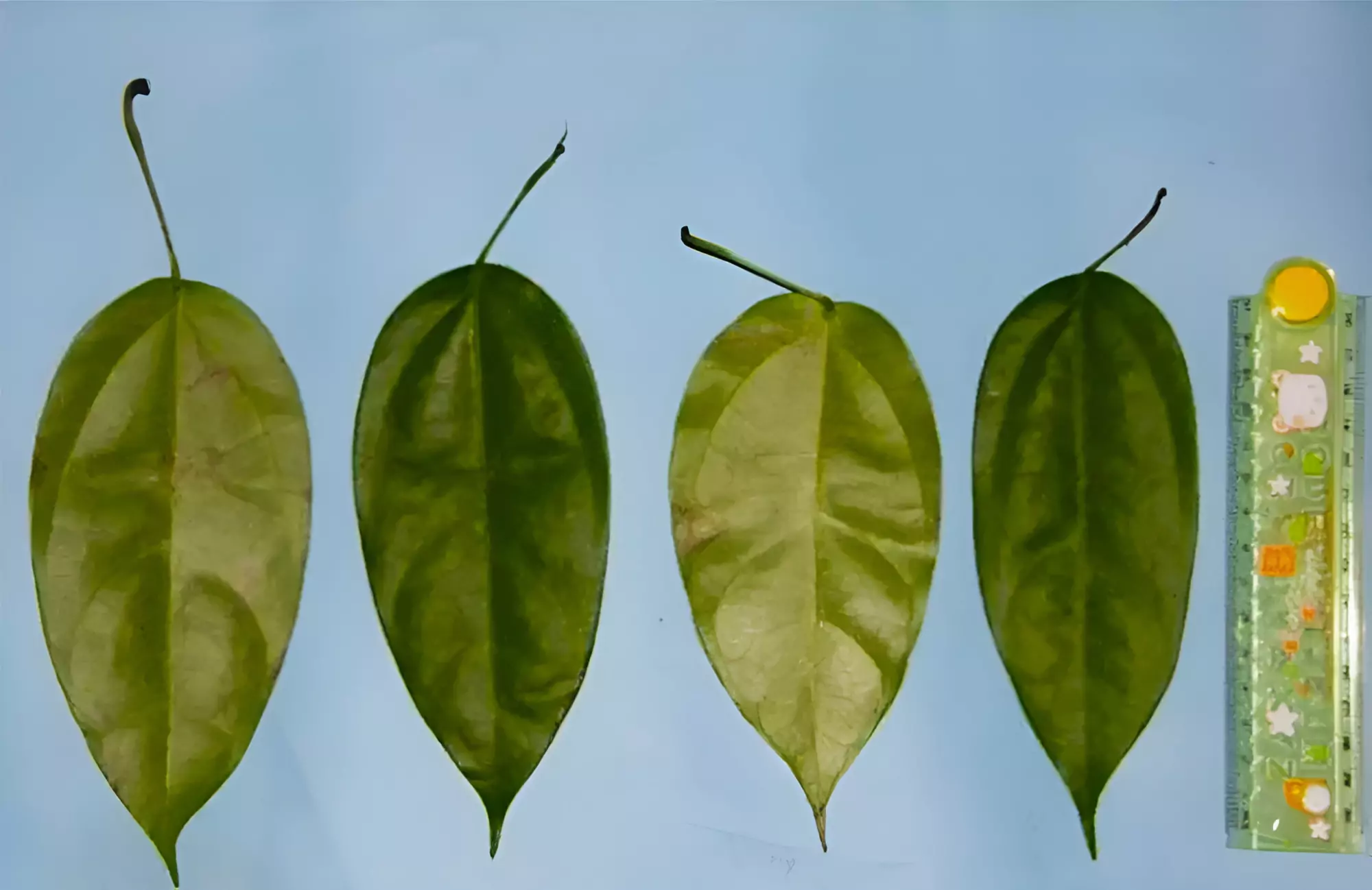
They are one of the extant species of great apes. The others are the Common Chimpanzee, Gorilla and the Chimpanzee or Bonobo.

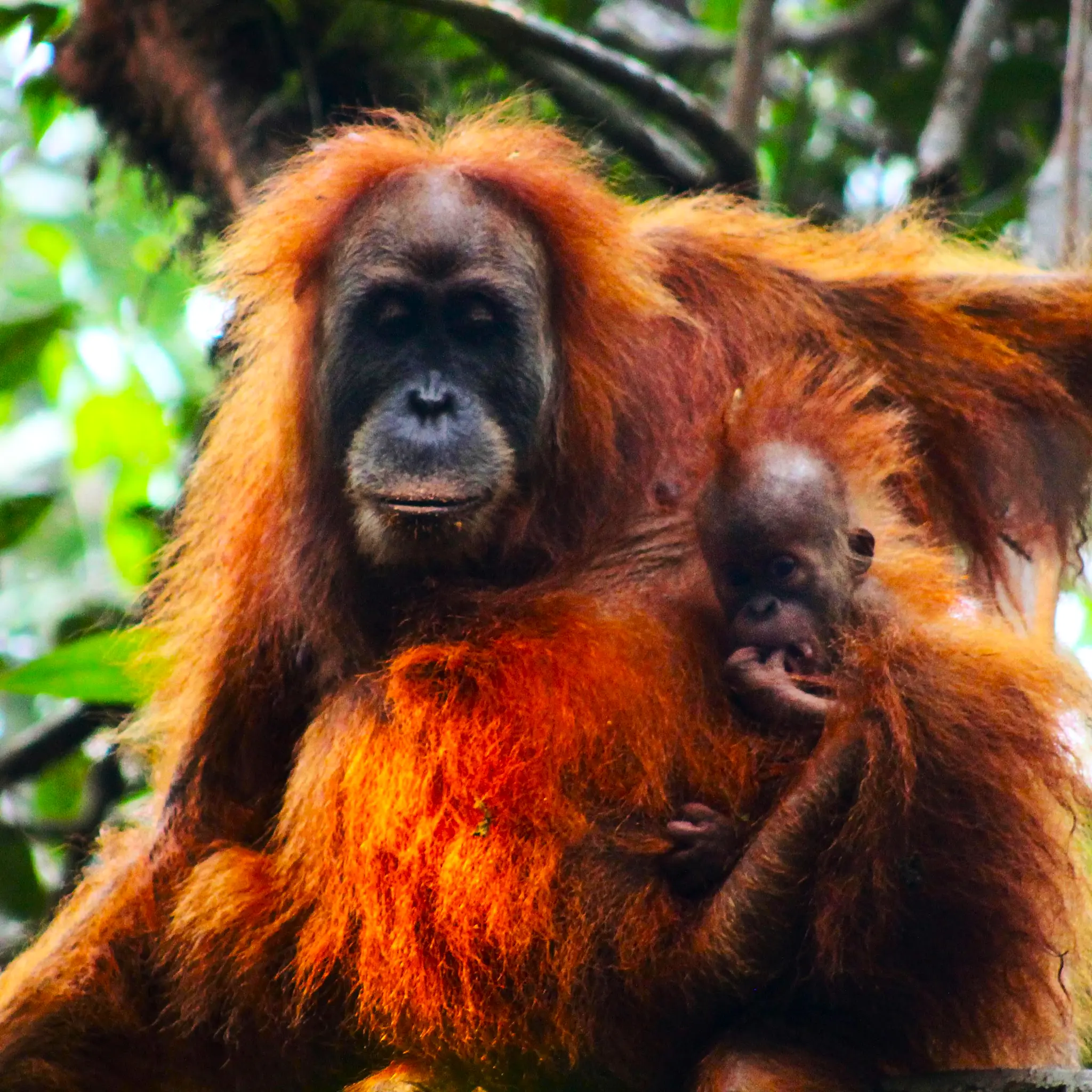 Females virtually never travel on the ground and adult males do so only rarely. This is in contrast to Bornean orang-utans, especially adult males, which more often descend to the ground.
Females virtually never travel on the ground and adult males do so only rarely. This is in contrast to Bornean orang-utans, especially adult males, which more often descend to the ground.
| Must Read | |
| NCERT Notes For UPSC | UPSC Daily Current Affairs |
| UPSC Blogs | UPSC Daily Editorials |
| Daily Current Affairs Quiz | Daily Main Answer Writing |
| UPSC Mains Previous Year Papers | UPSC Test Series 2024 |
CEO of OpenAI expressed a commitment towards the development of Artificial General Intelligence (AGI).
About Turing test
|
|---|
In ‘Computing Machinery and Intelligence’ (1950), Alan Turing introduced the Turing test, a benchmark for machine intelligence. Artificial General Intelligence (AGI) refers to a machine or a software that can perform any intellectual task that a human can do. This includes reasoning, common sense, abstract thinking, background knowledge, transfer learning, ability to differentiate between cause and effect, etc.
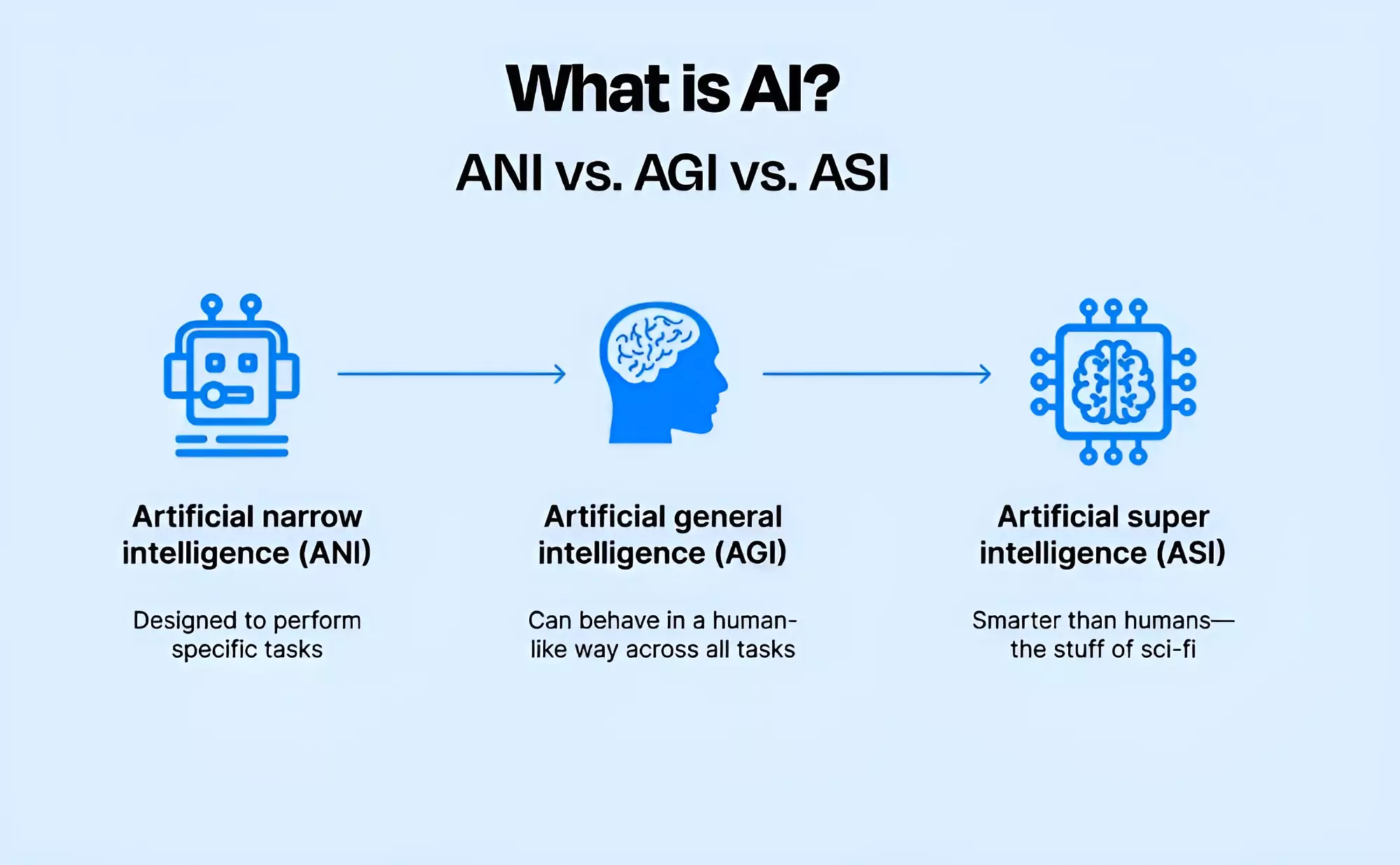 With AGI, researchers aim to build a software or computer that can do everything that a human computer does.
With AGI, researchers aim to build a software or computer that can do everything that a human computer does.

Stringent regulations are needed to ensure that the development of Artificial General Intelligence (AGI) is in line with human values and safety standards
| Must Read | |
| NCERT Notes For UPSC | UPSC Daily Current Affairs |
| UPSC Blogs | UPSC Daily Editorials |
| Daily Current Affairs Quiz | Daily Main Answer Writing |
| UPSC Mains Previous Year Papers | UPSC Test Series 2024 |
A Blue Corner notice is likely to be issued against an absconding MP from Karnataka by the Central Bureau of Investigation (CBI).
Blue Corner notice is a part of Interpol’s elaborate system of color-coded notices which enable countries to share alerts and requests for information on wanted criminals across the globe.
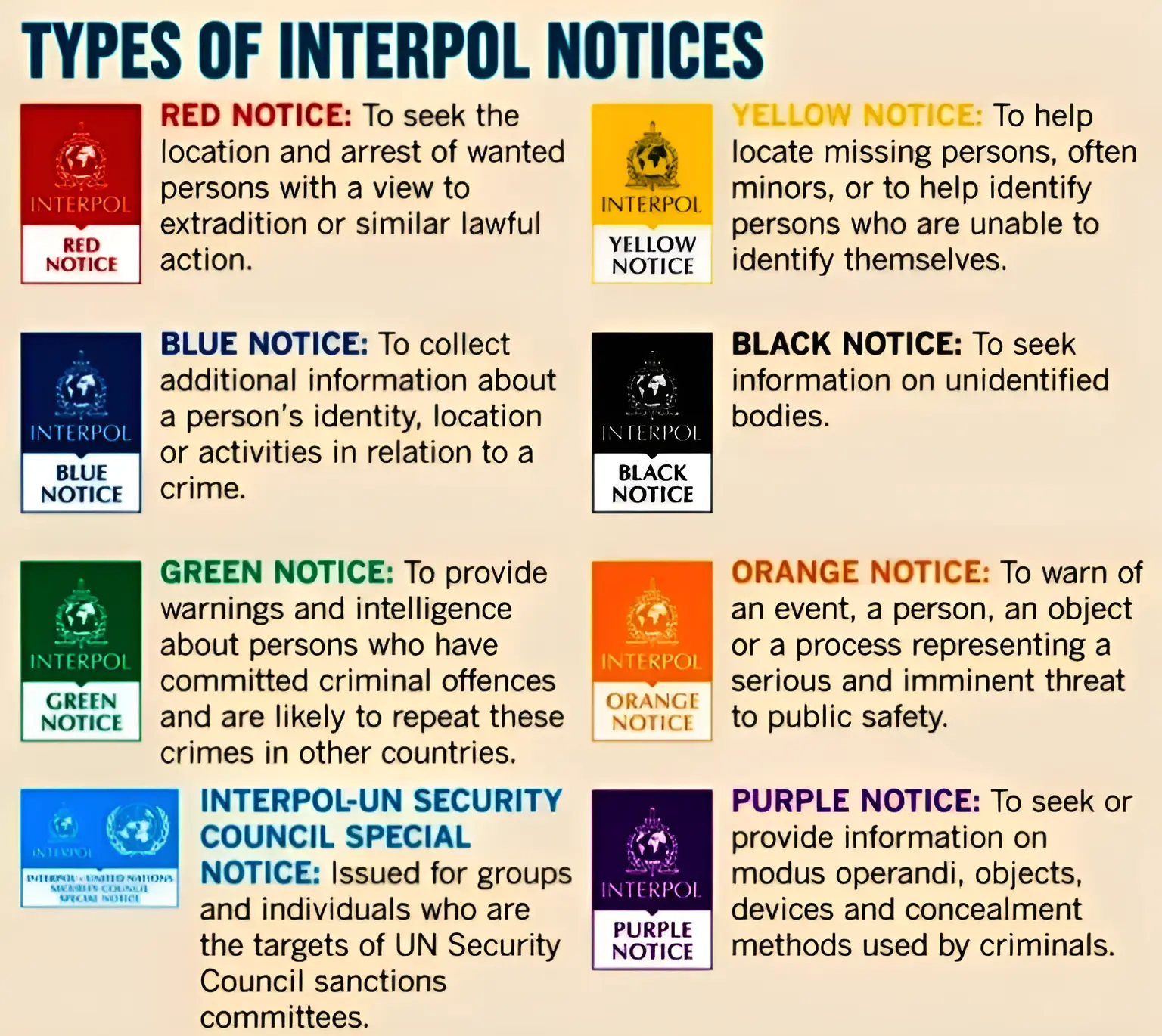
It was founded in 1923 as the International Criminal Police Commission (ICPC). In 1956, the ICPC adopted a new constitution and was thus named INTERPOL.
| Must Read | |
| NCERT Notes For UPSC | UPSC Daily Current Affairs |
| UPSC Blogs | UPSC Daily Editorials |
| Daily Current Affairs Quiz | Daily Main Answer Writing |
| UPSC Mains Previous Year Papers | UPSC Test Series 2024 |
The Geographical Indication (GI) certificate was awarded to the traditional artisans of ‘Kutch Ajrakh from the Kutch region in Gujarat.
For the artisans of Kutch Ajrakh, this certification validates their craftsmanship and safeguards their traditional knowledge and techniques from exploitation or misappropriation.

It is a time-honored textile craft in the Sindh, Barmer, and Kutch region of Gujrat. In Kutch, the villages of Dhamadka and Ajrakhpur serve as strongholds of the Ajrakh tradition, where artisans persist in employing time-honored techniques inherited through generations.
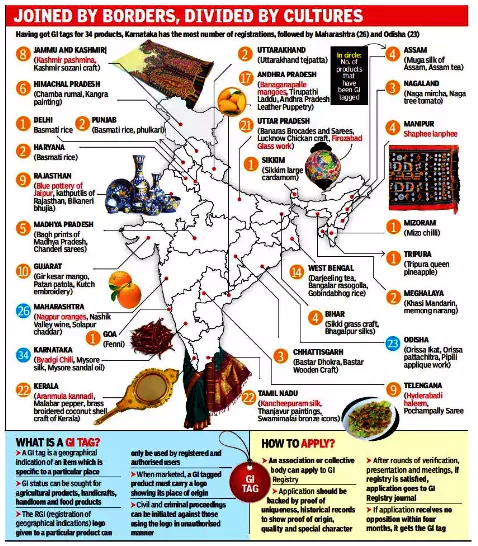
| Must Read | |
| NCERT Notes For UPSC | UPSC Daily Current Affairs |
| UPSC Blogs | UPSC Daily Editorials |
| Daily Current Affairs Quiz | Daily Main Answer Writing |
| UPSC Mains Previous Year Papers | UPSC Test Series 2024 |
For the first time, researchers have made a super thin sheet of gold that is only one atom thick.

Goldene is a special form of gold called a 2-dimensional allotrope. It shows that it’s a different arrangement of gold atoms.
Allotropes:
|
|---|
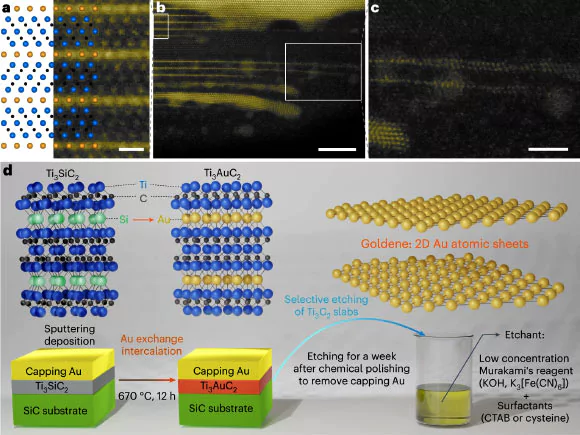 Gold is typically a metal, but a single-atom thick layer can transform it into a semiconductor.
Gold is typically a metal, but a single-atom thick layer can transform it into a semiconductor.Gold (Au) is a chemical element. It is renowned for its dense, lustrous, and yellow appearance. It Belongs to Group 11 (Ib) and Period 6 of the periodic table.
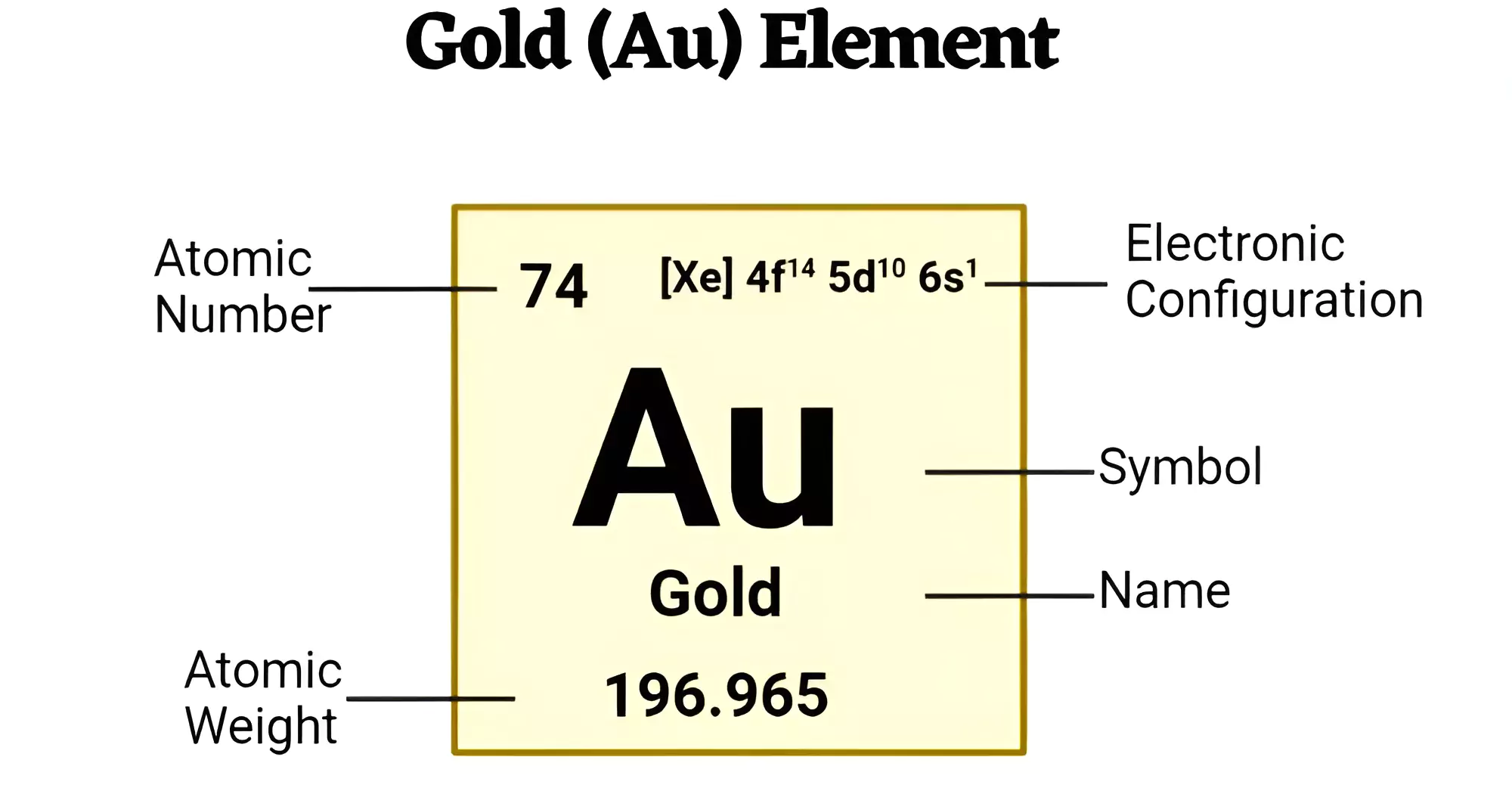
Here are the physical properties of gold are as follows;
Here is a summary of the chemical properties of gold:
| Group | 11 | Melting point | 1,063 °C (1,945 °F) |
| Period | 6 | Boiling point | 2,966 °C (5,371 °F) |
| Block | d | Density (g cm−3) | 19,300 kg per cubic metre. |
| Atomic number | 79 | Atomic weight | 196.96657 |
| State at 20°C | Solid | Key isotopes | 197Au |
| Electron configuration | [Xe] 4f145d106s1 | CAS number | 7440-57-5 |
| Must Read | |
| NCERT Notes For UPSC | UPSC Daily Current Affairs |
| UPSC Blogs | UPSC Daily Editorials |
| Daily Current Affairs Quiz | Daily Main Answer Writing |
| UPSC Mains Previous Year Papers | UPSC Test Series 2024 |
As per a study by the Kerala State Forest Protective Staff Organisation (KSFPSO), removing exotic plants from forest areas will help ensure food for wild elephants at Chinnakkanal in Munnar.
| Allelopathy: It has been defined as “a common biological phenomenon by which one organism produces biochemicals that influence the growth, survival, development, and reproduction of other organisms” |
|---|
| Must Read | |
| NCERT Notes For UPSC | UPSC Daily Current Affairs |
| UPSC Blogs | UPSC Daily Editorials |
| Daily Current Affairs Quiz | Daily Main Answer Writing |
| UPSC Mains Previous Year Papers | UPSC Test Series 2024 |
Recently, Supreme Court in Maya Gopinathan v. Anoop S.B. & Anr. reiterates that Stridhan’ Is Wife’s Absolute Property, Husband Holds No Title Over It.

Ownership of stridhan has become a symbol of status in society, equating women’s status with that of men. It grants women a sense of authority and ownership over their property, fostering independence and empowerment.
| Basis | Stridhan | Dowry |
| Definition | Streedhan is whatever a woman receives in her lifetime it includes all movable,immovable property gifts etc received prior to marriage, at the time of marriage, during child birth and during her widowhood. | Dowry means any property or valuable security given or agreed to be given either directly or indirectly by one party to a marriage to another party to the marriage. |
| Essentials | It is given voluntarily instead of being pressurized by undue influence of force. | It is not given voluntary as they are pressurized undue influence or compulsion |
| Breakdown of Marriage | If the marriage breaks down in the future,the woman has the right to recover the goods received as streedhan. | If the marriage breaks down in the future, the woman can’t recover the goods her family has given as a dowry. however can seek alternative reliefs against such dowry paid. |
| Legality | Acts of giving streedhan is legal | Acts of giving Dowry is illegal |
| Governing Act | Hindu Succession Act, 1956 | Dowry Prohibition Act, 1961 |
| Must Read | |
| NCERT Notes For UPSC | UPSC Daily Current Affairs |
| UPSC Blogs | UPSC Daily Editorials |
| Daily Current Affairs Quiz | Daily Main Answer Writing |
| UPSC Mains Previous Year Papers | UPSC Test Series 2024 |
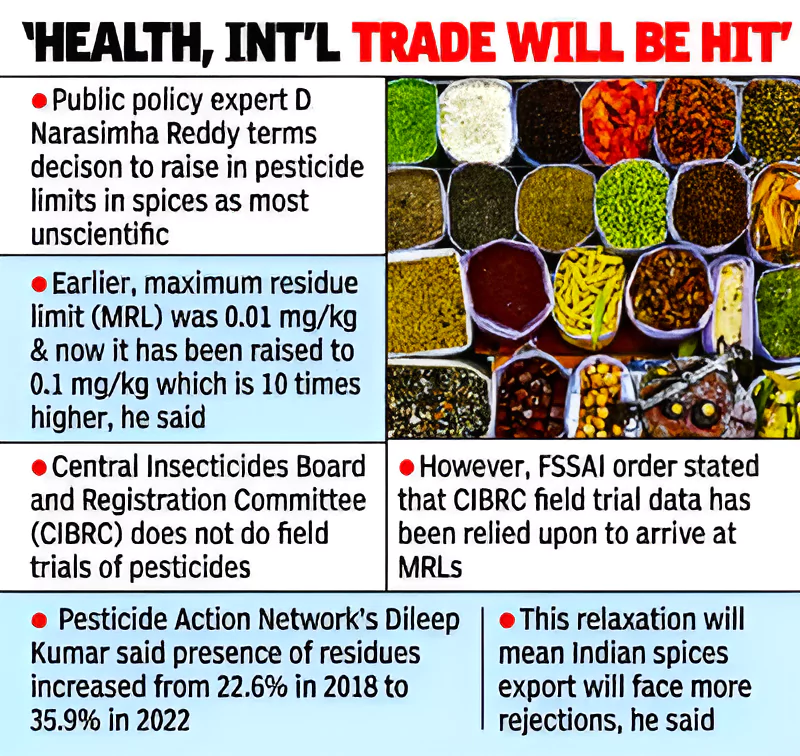
Recently, the Food Safety and Standards Authority of India (FSSAI) said that India has one of the most stringent standards of maximum residue limits (MRLs) in the world and rejected reports suggesting that food regulator FSSAI allows high levels of residues in spices and herbs.
A pesticide is any substance or mixture of substances intended for preventing, destroying, or controlling any pest.
|
|---|
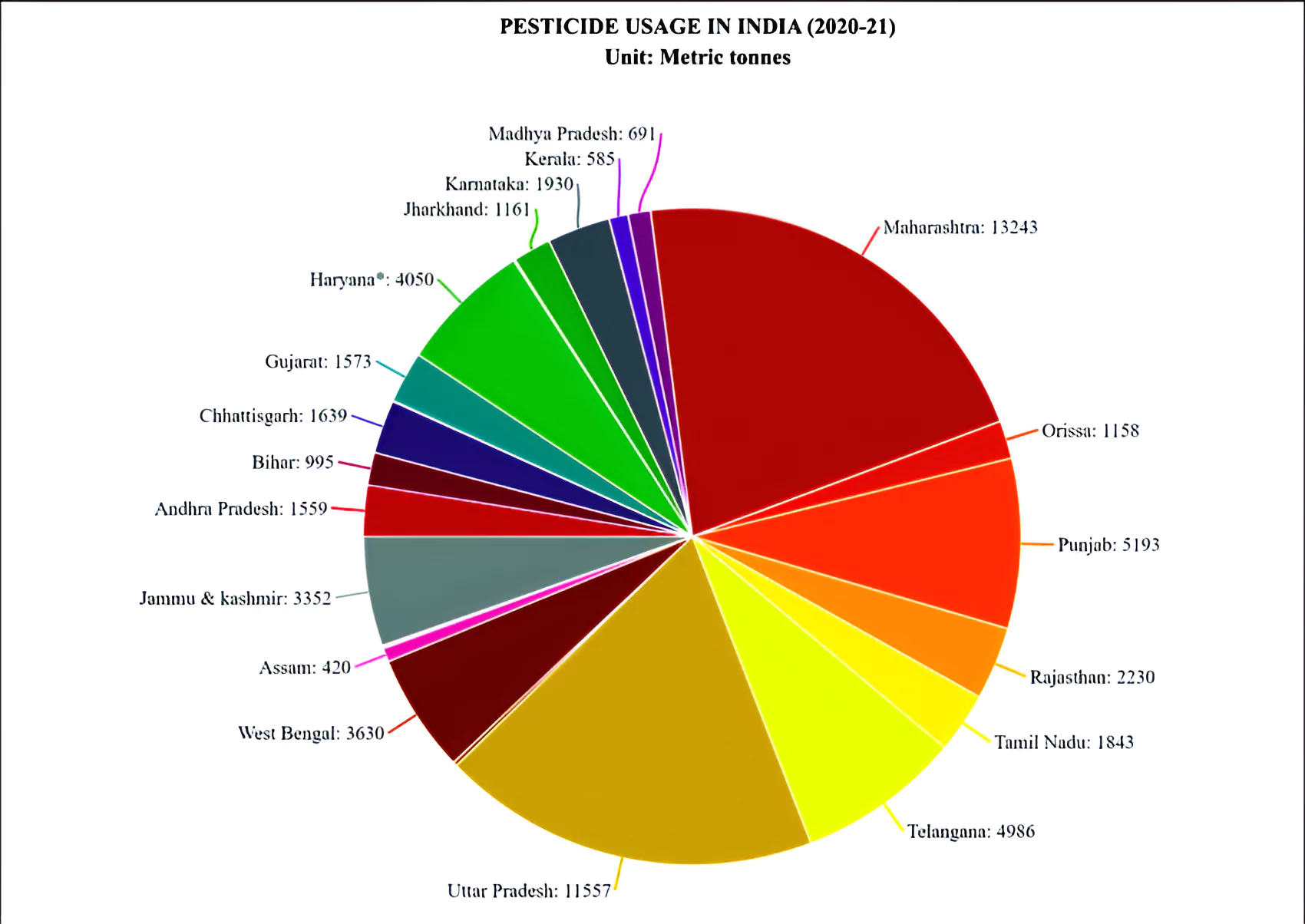 States Consuming Most Pesticides: Maharashtra has consumed the most chemical pesticides in India in the past five years, followed by Uttar Pradesh, Punjab and Haryana.
States Consuming Most Pesticides: Maharashtra has consumed the most chemical pesticides in India in the past five years, followed by Uttar Pradesh, Punjab and Haryana.Pesticides are regulated under the Insecticides Act, 1968 and the Insecticides Rules, 1971.
The Pesticides Management Bill, 2020
Integrated Pest Management (IPM) Programme
|
About Maximum Residue Limits (MRLs)
|
|---|
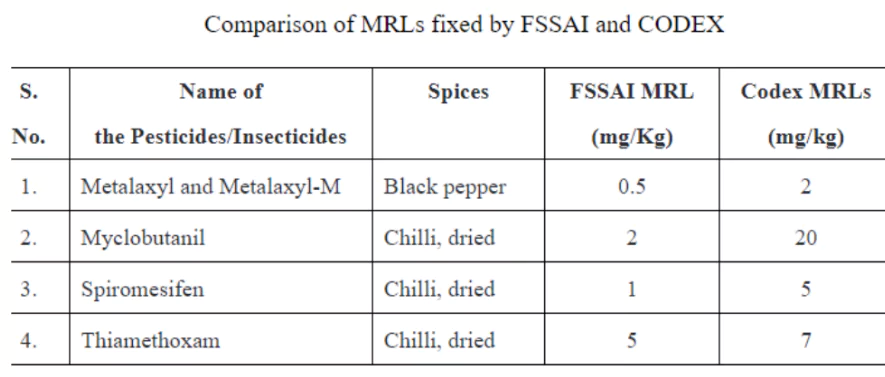 The Codex Alimentarius is a collection of internationally recognized standards, codes of practice, guidelines, and other recommendations published by the Food and Agriculture Organization relating to food, its production, labeling, and safety.
The Codex Alimentarius is a collection of internationally recognized standards, codes of practice, guidelines, and other recommendations published by the Food and Agriculture Organization relating to food, its production, labeling, and safety.
About the Pesticides Manufacturers & Formulators Association of India (PMFAI)
About FSSAI (Food Safety and Standards Authority of India)FSSAI has been established under Food Safety and Standards, 2006 which consolidates various acts & orders that have hitherto handled food related issues in various Ministries and Departments.
|
|---|
|
|---|
|
|---|
| Must Read | |
| NCERT Notes For UPSC | UPSC Daily Current Affairs |
| UPSC Blogs | UPSC Daily Editorials |
| Daily Current Affairs Quiz | Daily Main Answer Writing |
| UPSC Mains Previous Year Papers | UPSC Test Series 2024 |
<div class="new-fform">
</div>